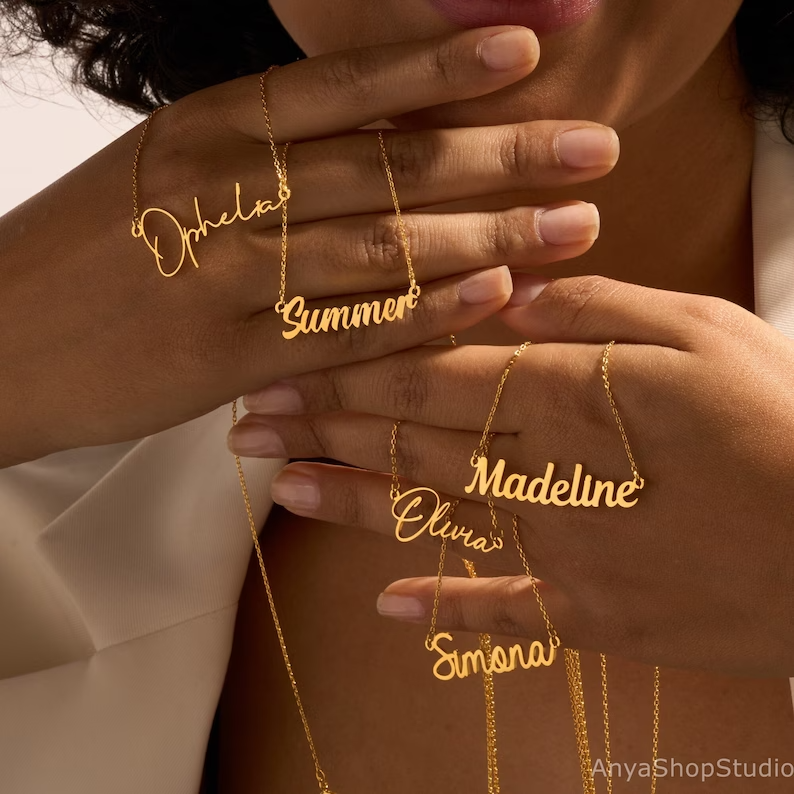A World of Brilliance: Exploring Jewelry Materials
Introduction
Jewelry is a canvas of creativity where materials transform into wearable art. From sparkling gemstones to lustrous metals, the choice of materials defines the beauty, character, and symbolism of each piece. In this blog post, we embark on a journey through the fascinating world of jewelry materials, exploring their diversity, characteristics, and the unique allure they bring to adornments that have captivated humanity for centuries.

1. Precious Metals: Shaping Elegance
Precious metals form the foundation of most jewelry. They include:
- Gold: Celebrated for its timeless allure, gold comes in various colors such as yellow, white, and rose, offering versatility and luxury.
- Silver: Known for its affordability and lustrous shine, silver is a favorite for both casual and formal jewelry.
- Platinum: Renowned for its rarity and durability, platinum is often used in engagement rings and high-end jewelry.
2. Gemstones: Nature’s Treasures
Gemstones add color, sparkle, and significance to jewelry:
- Diamonds: Known as the “king of gemstones,” diamonds symbolize love and eternity.
- Rubies: Vibrant red rubies are associated with passion and love.
- Sapphires: Blue sapphires symbolize wisdom and loyalty, while fancy sapphires come in various colors.
- Emeralds: Emeralds, with their lush green hue, represent rebirth and fertility.
3. Semi-Precious Gemstones: Beauty Beyond Rarity
Semi-precious gemstones are equally captivating:
- Amethyst: This purple gem is associated with tranquility and sobriety.
- Citrine: Known for its sunny yellow hue, citrine is linked to abundance and positivity.
- Topaz: Topaz comes in various colors, with blue topaz symbolizing communication and self-expression.
4. Organic Materials: Nature’s Gift
Some jewelry materials are derived from nature:
- Pearls: Cultured and natural pearls represent purity and beauty.
- Ivory: While traditional ivory is controversial, alternatives like tagua nut are sustainable and eco-friendly.
- Wood: Wood adds a rustic and natural element to jewelry designs.
5. Synthetic Materials: Innovation Meets Style
Synthetic and lab-grown materials offer creativity and affordability:
- Lab-Grown Diamonds: These diamonds offer the same sparkle as natural ones but are created in controlled environments.
- Cubic Zirconia (CZ): CZ stones mimic the brilliance of diamonds and are often used in affordable jewelry.
6. Mixed Media: Fusion of Creativity
Jewelry designers often blend various materials to create unique pieces. For example, combining metals with gemstones, enamels, or textiles results in striking and eclectic designs.
7. Care and Maintenance
Different materials require specific care:
- Precious Metals: Regular cleaning and occasional polishing maintain the shine of metals.
- Gemstones: Gemstones may require gentle cleaning and protection from scratches.
- Organic Materials: Organic materials like pearls should be stored separately to prevent damage.
Conclusion: Crafting Elegance
Jewelry materials are the building blocks of adornment, each with its own story, symbolism, and character. From the dazzling brilliance of diamonds to the warm embrace of gold, these materials are crafted into wearable art that reflects the essence of style, sentiment, and tradition.
